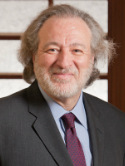The phenomenology of delirium and its motoric subtypes in patients with cancer Journal Article
| Authors: | Boettger, S.; Campion, P.; Breitbart, W.; Boettger, S. |
| Article Title: | The phenomenology of delirium and its motoric subtypes in patients with cancer |
| Abstract: | Aim: To examine the phenomenological characteristics of delirium and its motoric subtypes in patients with cancer based on the Memorial Delirium Assessment Scale (MDAS) items. Methods: We conducted a secondary analysis of our delirium database. Sociodemographic as well as medical variables, the MDAS subitems (1-10) and the Karnofsky Performance Status scale (KPS) were analyzed in respect to the phenomenology of delirium. Results: We were able to retrieve 111 cases with diverse cancer diagnoses from our delirium database. The mean age of all subjects was 65.6 years, the delirium severity as measured with the MDAS was 18.3. The most common and severe symptoms were found in the cognitive domain (71-90%, MDAS 1.96-2.35), psychomotor abnormality (95%, MDAS 2.14), sleep-wake cycle disturbance (87%, MDAS 1.97) and disturbance of consciousness (87%, MDAS 1.94). Concentration was the most impaired cognitive task. Hyperactive delirium in comparison to hypoactive delirium was more severe; domains of more severe impairment were cognition, level of organization, perception, and psychomotor behavior. The prevalence of disorganization, perceptual disturbances and delusions were increased in hyperactive delirium, but in particular perceptual disturbances and delusions also occurred to a substantial rate in hypoactive delirium (59.5 and 53.2%). Perceptual disturbances and delusions were not associated with the impairment of the cognitive domain. Conclusion: Delirium in cancer patients is a disorder of cognition, consciousness, psychomotor behavior and sleep-wake cycle. Hyperactive delirium may present more severe, and the severity of symptomatology in the cognitive domain, level of organization, perception and psychomotor behavior may be increased. Perceptual disturbances and delusions may occur to a substantial rate in hypoactive delirium. |
| Keywords: | delirium; phenomenology; delusions; perceptual disturbances; subtypes |
| Journal Title: | German Journal of Psychiatry |
| Volume: | 14 |
| Issue: | 2 |
| ISSN: | 1433-1055 |
| Publisher: | University of Goettingen |
| Date Published: | 2011-01-01 |
| Start Page: | 66 |
| End Page: | 71 |
| Language: | English |
| PROVIDER: | scopus |
| DOI/URL: | |
| Notes: | --- - "Export Date: 1 May 2012" - "CODEN: GJPEA" - "Source: Scopus" |
MSK Authors
-
 508
508Breitbart
Related MSK Work


